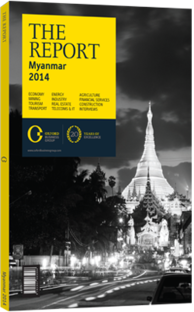Finger on the pulse: Strong global demand and a suitable climate aid legumes production
Myanmar can learn a lot from pulses. In fact, output has grown exceptionally fast over the past two decades. This is mostly as a result of fewer strict state controls, and farmers being allowed to plant, harvest and sell them freely. In many ways, the history of pulses, in particular beans, goes a long way to showing that heavy-handed intervention did not work and that reform and liberalisation are the best course of action.
A National Favourite
Legumes were brought to British Burma in the 19th century along with Indian farmers, with India continuing to this day as the main market. When the Burmese Way to Socialism became the law of the land, agriculture was strictly controlled. The government set quotas, fixed prices and banned private trade. Pulses were no exception. The system brought little reward, with productivity and exports falling significantly and serious fiscal imbalances undermining the economy. Reforms in the late 1980s led to farmers being allowed to sell more freely and exports permitted outside official channels. The government then quickly reversed course, and the procurement systems and export bans were re-established for a number of crops, most notably rice. Pulses, however, did not face a re-imposition of the old ways and remained relatively free of government control. According to Ikuko Okamoto, a senior research fellow at the Institute of Developing Economies for the Japan External Trade Organisation, the result was an increase in the production and export of pulses, in stark contrast to the situation in the rest of the sector. In the 1970s, the area utilised for the sowing of pulses in Myanmar fell 8%, versus a worldwide decline of 5.2%. In the 1980s, that number jumped 26.3% in Myanmar against 11.4% worldwide. In the 1990s, land committed to the cultivation of pulses rose 247.8% in Myanmar, while worldwide it dropped 0.1%. In the 1985/86 season, pulses represented 21.1% of agricultural exports, though 15 years later, they made up 71.7% of agricultural exports. As per figures from the Food and Agricultural Organisation of the UN, exports for pulses in 1980 were 71,000 tonnes. A decade later, this number had risen to 195,000 tonnes. By 2000, it had risen to 831,000 tonnes and to 1.3m tonnes in 2006. In fact, dried pulses are now the second-largest export after natural gas.
More Profitable
In certain areas of the country, government efforts to introduce pulses in the 1980s failed, though planting grew rapidly in the 1990s without any government support. According to Okamoto’s research, in 1986, one particular township had no pulse production, yet by 2001 it was planting 40,468 ha of pulses. Over the same period, rice cultivation was 58,679 ha. Net revenue from pulses was 40% more than for a rice paddy, and cash income 90% higher.
Besides being a relatively easy crop to grow – with no complicated technology needed – a number of other factors have aided production. Pulses have a ready export market, in India. For farmers looking to increase profitability, legumes are an easy choice. But Okamato points out that the absence of “bad policy” is also significant. Without price or production controls, farmers enjoyed flexibility and profitability not possible in products still under strict state management. Indeed, a number of useful innovations and advances were developed once the market was liberalised. Marketing and distribution mechanisms emerged as did helpful financing solutions, such as tractor rental.
Shocks
Notwithstanding, pulses are facing a number of challenges. While entering the market enabled farmers to generate income, it has exposed them to the possibility of exogenous shocks. Most pulses are exported and an estimated 80-85% of production goes to India. Now, with commodity prices weak, the Indian economy struggling and India reducing pulse purchases from Myanmar, it is becoming more difficult for farmers to sell their surplus production. Competition from Australia and Canada is also reducing Myanmar’s overall share of the Indian market. Exports of pulses decreased from around 1.45m tonnes at the end of the fiscal year in 2011/12 to 1.4m tonnes for 2012/13.
You have reached the limit of premium articles you can view for free.
Choose from the options below to purchase print or digital editions of our Reports. You can also purchase a website subscription giving you unlimited access to all of our Reports online for 12 months.
If you have already purchased this Report or have a website subscription, please login to continue.

